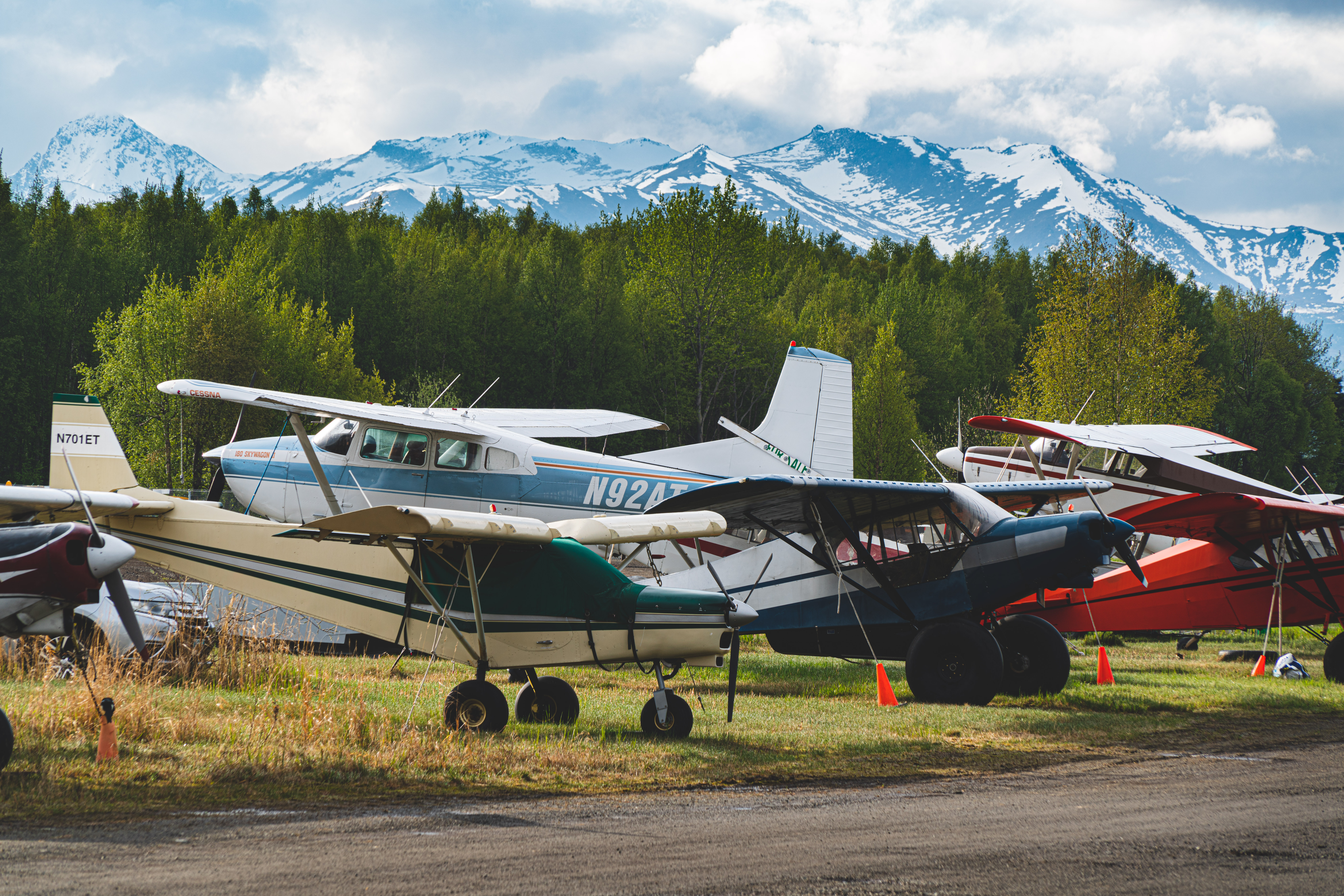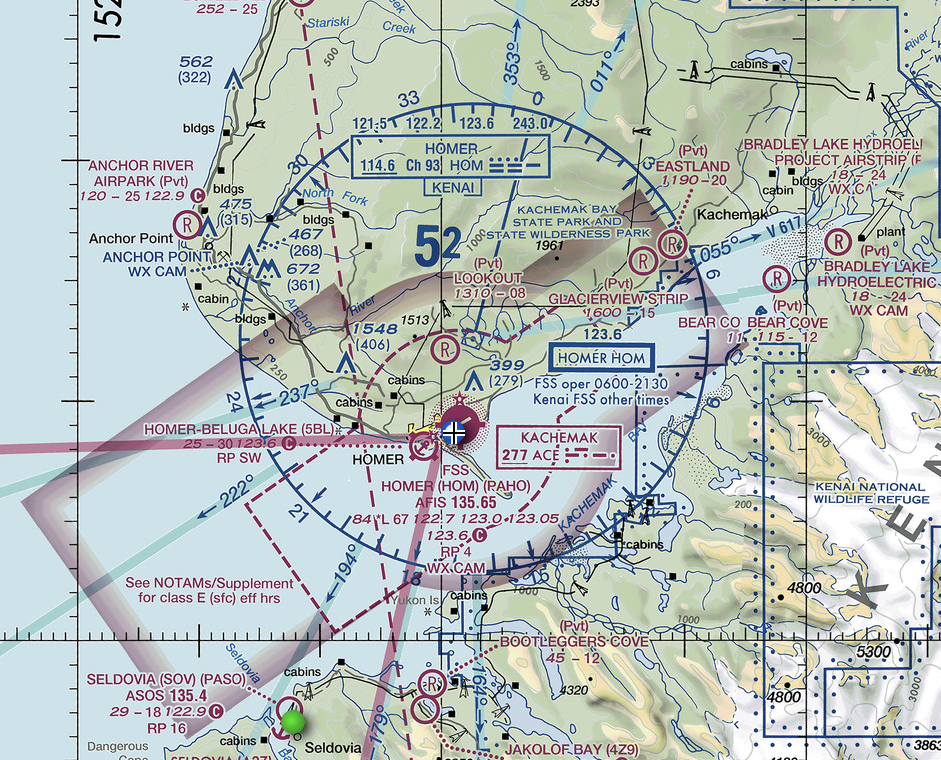
The National Airspace System is categorized into multiple classes based on the needs, functions, or levels of control by the FAA. Ranked from the most restrictive to the least, these classes help control air traffic by looking after which aircraft type is suitable for which class.
In this guide, I’ll discuss the various airspace classes, the rules to be followed in each class, and other important details. So, let’s start.
6 Airspace Classes – Regulatory And Non-Regulatory
The two main categories of airspace are regulatory and non-regulatory. These two are further divided into four subcategories. These are:
- Controlled Airspace
- Uncontrolled Airspace
- Special Use Airspace
- Other Airspace
Out of these four, it’s controlled and uncontrolled airspace where most pilots spend most time flying. Let’s now understand these two airspaces in detail below.
Controlled Airspace (Or Regulated Airspace)
The controlled airspace, as the name suggests, falls under the air traffic controller (ATC.) That is, any aircraft wanting to enter controlled airspace must obtain ATC’s clearance to do so. And follow the restrictions of the five classes under it. These are:
Class Alpha (A)
The Class Alpha (A) airspace is the most restrictive with IFR rules in place for aircraft flying here. Generally, jets, turboprop aircraft, etc., use the Class A airspace.
This airspace starts from 18,000′ MSL, up to and including 60,000′.
Class Bravo (B)
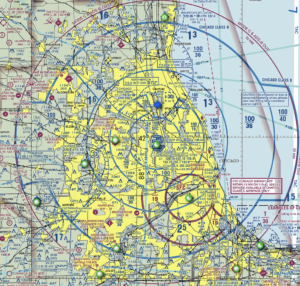
This airspace extends up to 10,000′ MSL from the ground. Class Bravo (B) airspace resembles an upside-down layered cake as it widens proportionally with altitude. This particular airspace consists of the nation’s busiest airports and can be modified accordingly. Similar to Class A airspace, every airplane that tends to fly within or through Class B airspace must obtain legit clearance from ATC. Class B airspace is another restricted airspace. Its restrictions, however, aren’t as hard as those of Class A.
Class Charlie (C)
Another customizable airspace class is Class Charlie (C). It starts from the ground and extends up to 4,000′ above the airport elevation. Class C airspace has a fixed shape and size, unlike Class B. Another critical difference between the two classes is the 2 layers in the former.
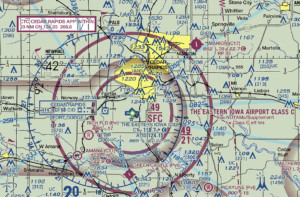 The first layer is called the surface area and has a five-mile radius. The second layer is the shelf area extending ten miles in either direction from the airport.
The first layer is called the surface area and has a five-mile radius. The second layer is the shelf area extending ten miles in either direction from the airport.
It’s worth noting that aircraft don’t need any specific clearance from the ATC to fly around or within Class C airspace. However, two-way radio communication with the ATC throughout the flight around and within this class is .
Class Delta (D)
Class D is less restrictive than the other airspace classes discussed so far. It extends from the surface up to and including 2,500′ above airport elevation. This class has a single layer called the surface area. There’s no shelf or outer area.
Coming to the requirements in Class D airspace, two-way radio communication with the ATC throughout the flight around and within this class is mandatory, just like in Class C.
Class Echo (E)
The airspace that’s not classified as Class A, B, C, or D is Class Echo (E). That’s the primary reason why this airspace class starts at various altitudes. For example, 700′ AGL, 1,200′ AGL, etc. Moreover, Class E is the least restrictive airspace with not many restrictions or requirements for pilots to take note of. It can also extend up to but not including 18,000′ Mean Sea Level.
FYI: In the U.S., most of the airspace is classified as Class E.
Uncontrolled Airspace (Or Non-Regulated Airspace)
Let’s now understand the ONLY NON-REGULATED airspace – Class Golf (G) airspace. Being non-regulated, it has no air traffic controller access. The VFR and IFR traffic is also uncontrolled here.
Class G airspace borders the Class E airspace and is often highlighted by transparent magenta circles surrounding airports in the United States. If pilots are using this uncontrolled airspace, they must note the following restrictions.
- The maximum speed while flying below 10,000′ MSL is 250 knots.
- No equipment is required when flying below 10,000′ MSL. On the other hand, if the pilot is flying at or above 10,000′ MSL and over 2,500′ AGL, a Mode-C transponder is required.
- The IFR pilots must stay 1,000′ above the highest obstacle within 4 nautical miles horizontally.
So, it’s all about the various airspace classes.
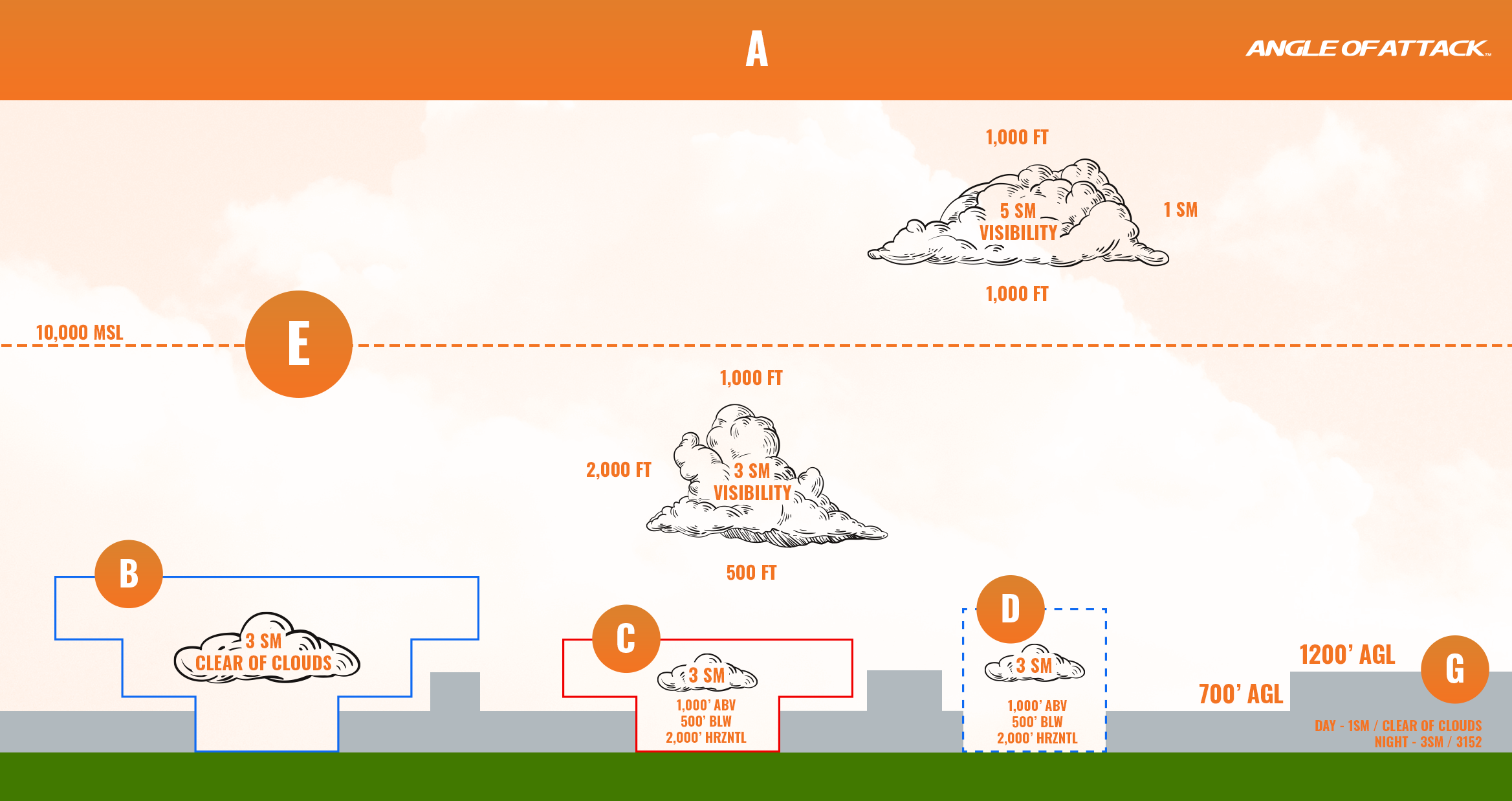
So, there you go. Every pilot must have the aforementioned knowledge about every controlled and uncontrolled airspace. This does not only help in air traffic activity management but ensures passenger and pilot safety.
Altitude, Visibility, And Cloud Clearance Requirements In Class A, B, C, D, E, And G Airspace irrespective of which airspace class a pilot is flying within or around, the airspace classes and the cloud clearance requirements must be respected. Always check the corresponding altitude and visibility requirements as well.
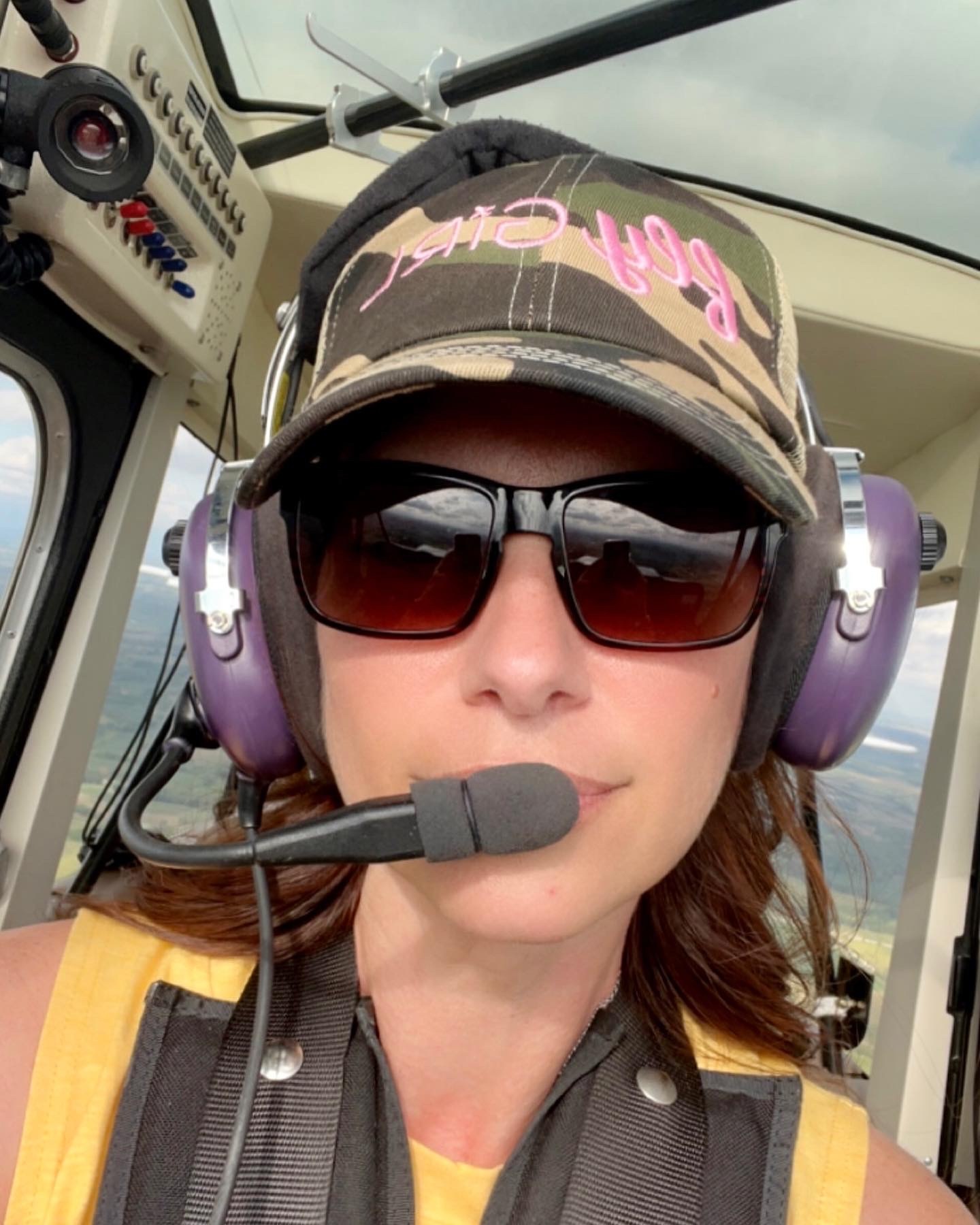
Karey grew up and obtained her in private pilot’s license in Central Iowa. She fell in love with tailwheel aircraft during her primary training and obtained a tailwheel endorsement the week following her private pilot checkride. She is eager to obtain her seaplane rating and is merging her passion for flying with her prior work career. Karey has a background in marketing, editing, and web design after graduating from Simpson College. When she is not flying or working, Karey enjoys anything related to technology and admits she can be a bit of a nerd. She also has discovered a love for virtually all outdoor pursuits, with a special fondness for climbing, shooting, and hiking.

Stay Connected
Be the very first to get notified when we publish new flying videos, free lessons, and special offers on our courses.



